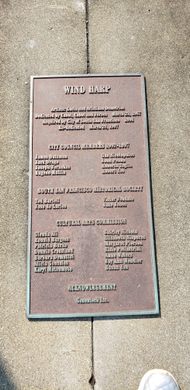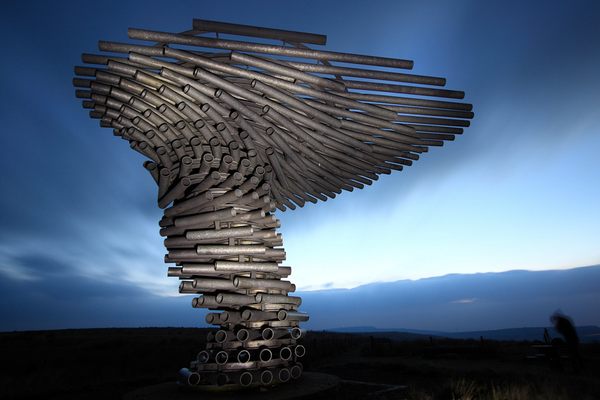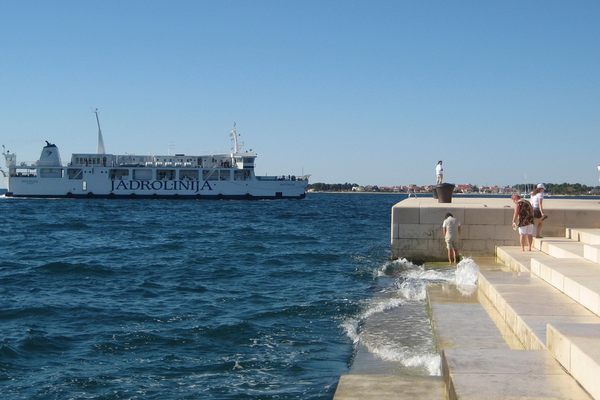Perched on a hilltop in a South San Francisco industrial park, this striking 92-foot-tall sculpture by Aristides Demetrios is one of the world’s largest aeolian harps. Named for Aeolus, the Greek god of the wind, and invented by the 17th-century polymath Athanasius Kircher, an aeolian harp is a passive instrument played by the movement of the wind.
Originally called the Cabot, Cabot and Forbes Tower when it was constructed in 1967 as the centerpiece of their industrial park.
Fabricated from steel manufactured at Bethlehem Steel. It was designed to “take advantage of the viewer’s motion…constantly changing, presenting a series of graceful ellipses and a shifting light pattern.”
Be sure to visit on a breezy day to hear the eerie sounds of the arched steel I-beams singing at their loudest. Situated 243 feet above sea level, the site also offers a beautiful panoramic view of South San Francisco and the Bay. In turn, the Wind Harp can be seen from the Bay Bridge, East Bay, and the San Francisco Airport.
Know Before You Go
It is located amongst the buildings of Genentech. You don't have to enter the campus to access the Wind Harp. You can see the Wind Harp sign from the road. The paved path shown in some of the photos is just north of 525 DNA Way. Signs in the parking lot at that address state that visitors to the Wind Harp may park there for 30 minutes.





























Follow us on Twitter to get the latest on the world's hidden wonders.
Like us on Facebook to get the latest on the world's hidden wonders.
Follow us on Twitter Like us on Facebook